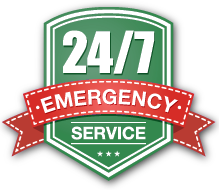More facts to undercut those “myths”:
8. A brick in the toilet tank helps reduce water usage. Well, maybe, but the brick will deteriorate and its detritus will pollute the water. It may also get in the way of the toilet’s flapper, causing it to break. Finally, using less water per flush may necessitate a second flush, more than wiping out any water savings.
9. Putting bleach in the toilet tank will keep both the tank and bowl clean. No, it will probably destroy the flushing apparatus in a relatively short time. Put the bleach in the bowl instead.
10. The exploding water tank syndrome. The water tank comes on and you begin to hear a loud rumbling—very ominous, should you evacuate? No, be calm. In fact, the rumbling results from sediment in your tank; minerals, mostly calcium, found in the hard water common in our area sink to the bottom of the tank, where the heating element is found. When you turn it on, the sediment around the element prevents the proper rising of heat through the water and the expansion of air bubbles—hence the rumbling. And the process requires more heating, hence more expense. Today’s water heaters can be drained and flushed to eliminate the sediment in hard water like ours.
11. The water in your toilet always flushes counter-clockwise. Well, no. Water in large bodies like the ocean does circulate in a counter-clockwise direction in the northern hemisphere and clockwise in the southern because of the “Coriolis effect” resulting from earth’s rotation. It has no affect whatever on small containers like toilets and sinks, whose direction of flow is governed by the design of the equipment



